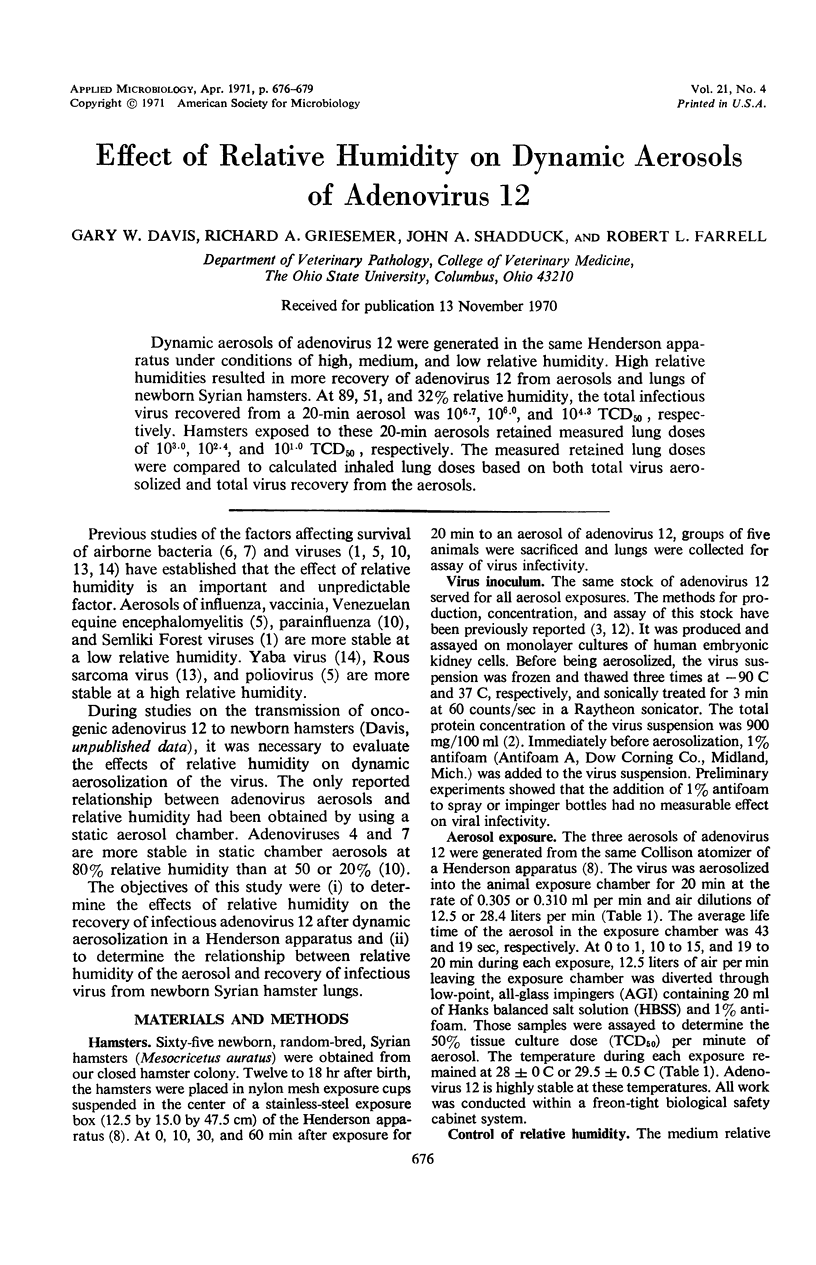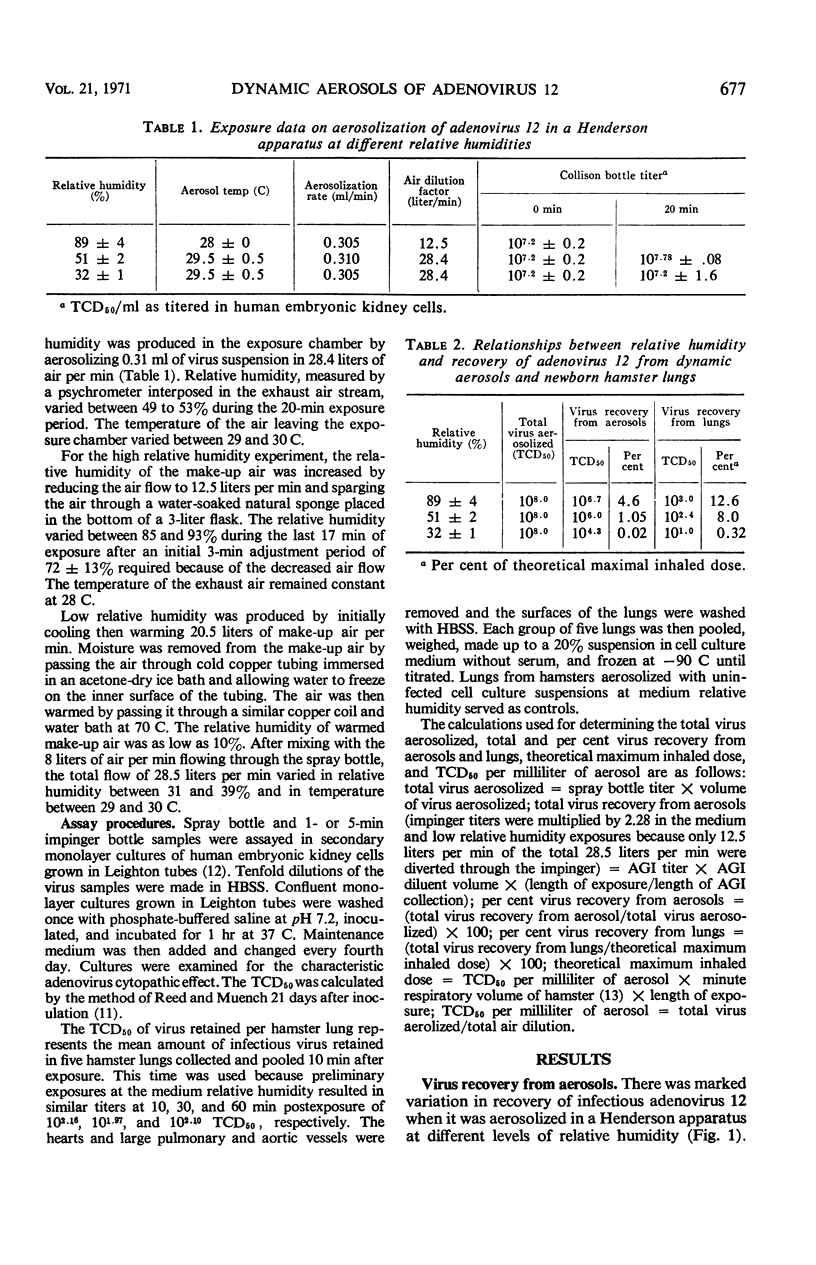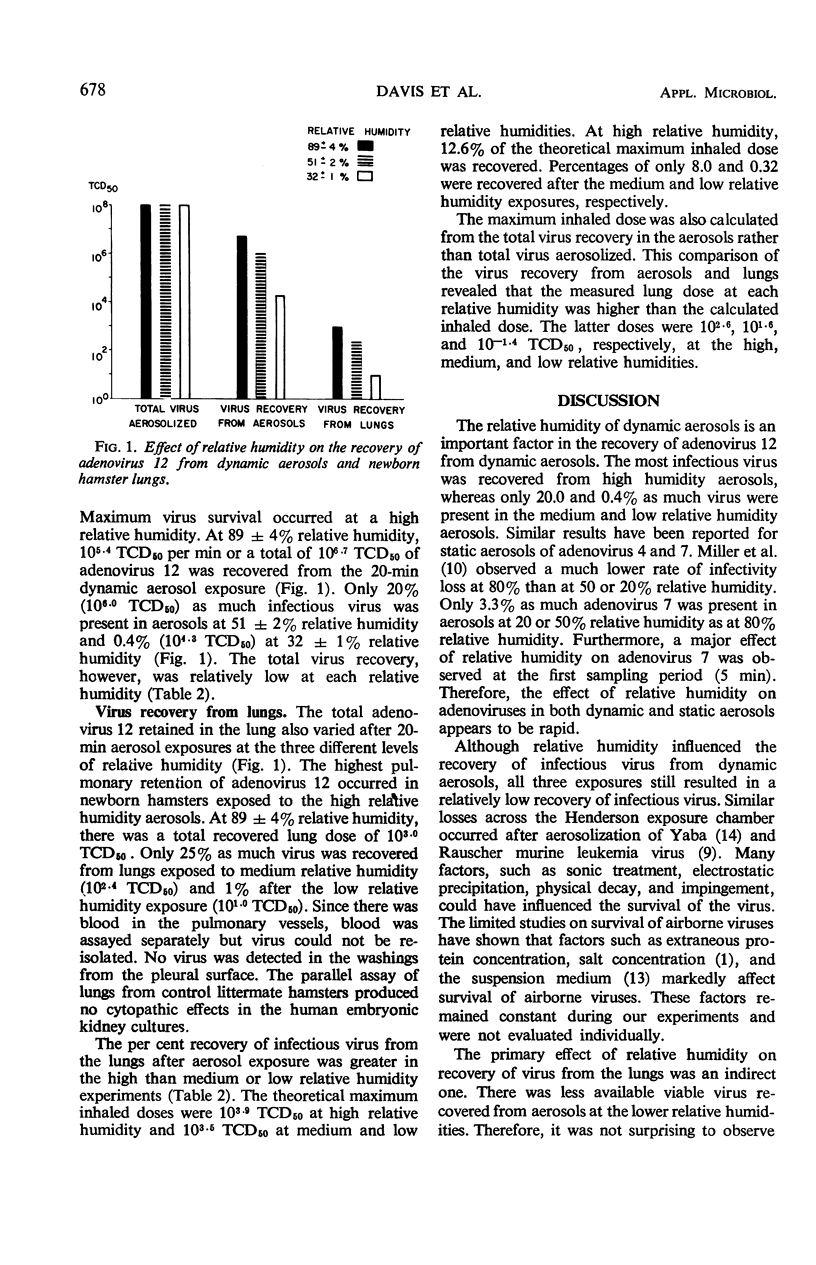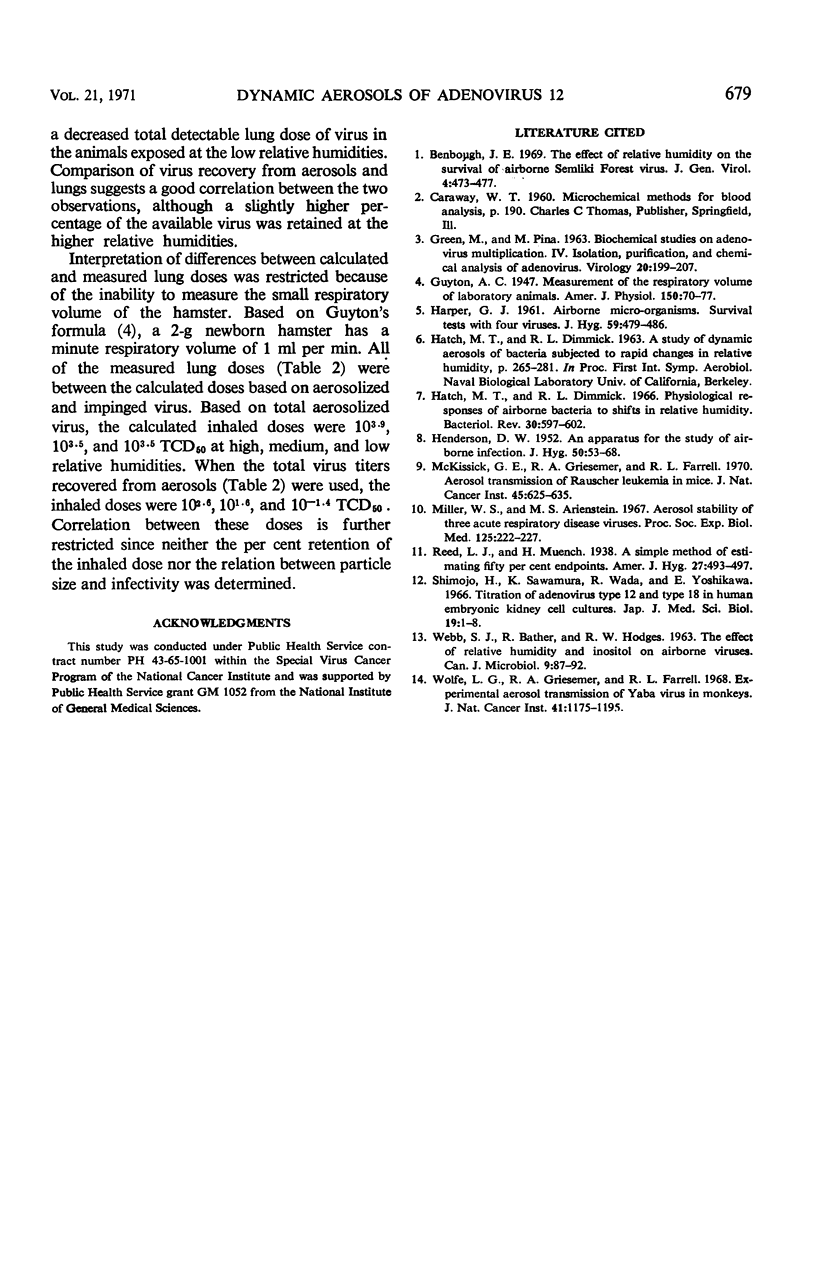Abstract
Dynamic aerosols of adenovirus 12 were generated in the same Henderson apparatus under conditions of high, medium, and low relative humidity. High relative humidities resulted in more recovery of adenovirus 12 from aerosols and lungs of newborn Syrian hamsters. At 89, 51, and 32% relative humidity, the total infectious virus recovered from a 20-min aerosol was 106.7, 106.0, and 104.3 TCD50, respectively. Hamsters exposed to these 20-min aerosols retained measured lung doses of 103.0, 102.4, and 101.0 TCD50, respectively. The measured retained lung doses were compared to calculated inhaled lung doses based on both total virus aerosolized and total virus recovery from the aerosols.
Full text
PDF



Selected References
These references are in PubMed. This may not be the complete list of references from this article.
- Benbough J. E. The effect of relative humidity on the survival of airborne Semliki forest virus. J Gen Virol. 1969 Jun;4(4):473–477. doi: 10.1099/0022-1317-4-4-473. [DOI] [PubMed] [Google Scholar]
- GREEN M., PINA M. Biochemical studies on adenovirus multiplication. IV. Isolation, purification, and chemical analysis of adenovirus. Virology. 1963 May;20:199–207. doi: 10.1016/0042-6822(63)90157-0. [DOI] [PubMed] [Google Scholar]
- HARPER G. J. Airborne micro-organisms: survival tests with four viruses. J Hyg (Lond) 1961 Dec;59:479–486. doi: 10.1017/s0022172400039176. [DOI] [PMC free article] [PubMed] [Google Scholar]
- HENDERSON D. W. An apparatus for the study of airborne infection. J Hyg (Lond) 1952 Mar;50(1):53–68. doi: 10.1017/s0022172400019422. [DOI] [PMC free article] [PubMed] [Google Scholar]
- Hatch M. T., Dimmick R. L. Physiological responses of airborne bacteria to shifts in relative humidity. Bacteriol Rev. 1966 Sep;30(3):597–603. doi: 10.1128/br.30.3.597-603.1966. [DOI] [PMC free article] [PubMed] [Google Scholar]
- McKissick G. E., Griesemer R. A., Farrell R. L. Aerosol transmission of Rauscher Murine Leukemia virus. J Natl Cancer Inst. 1970 Oct;45(4):625–636. [PubMed] [Google Scholar]
- Miller W. S., Artenstein M. S. Aerosol stability of three acute respiratory disease viruses. Proc Soc Exp Biol Med. 1967 May;125(1):222–227. doi: 10.3181/00379727-125-32054. [DOI] [PubMed] [Google Scholar]
- Shimojo H., Sawamura K., Wada R., Yoshikawa E. Titration of adenovirus type 12 and type 18 in human embryonic kidney cell cultures. Jpn J Med Sci Biol. 1966 Feb;19(1):1–8. doi: 10.7883/yoken1952.19.1. [DOI] [PubMed] [Google Scholar]
- Wolfe L. G., Griesemer R. A., Farrell R. L. Experimental aerosol transmission of Yaba virus in monkeys. J Natl Cancer Inst. 1968 Nov;41(5):1175–1195. [PubMed] [Google Scholar]


